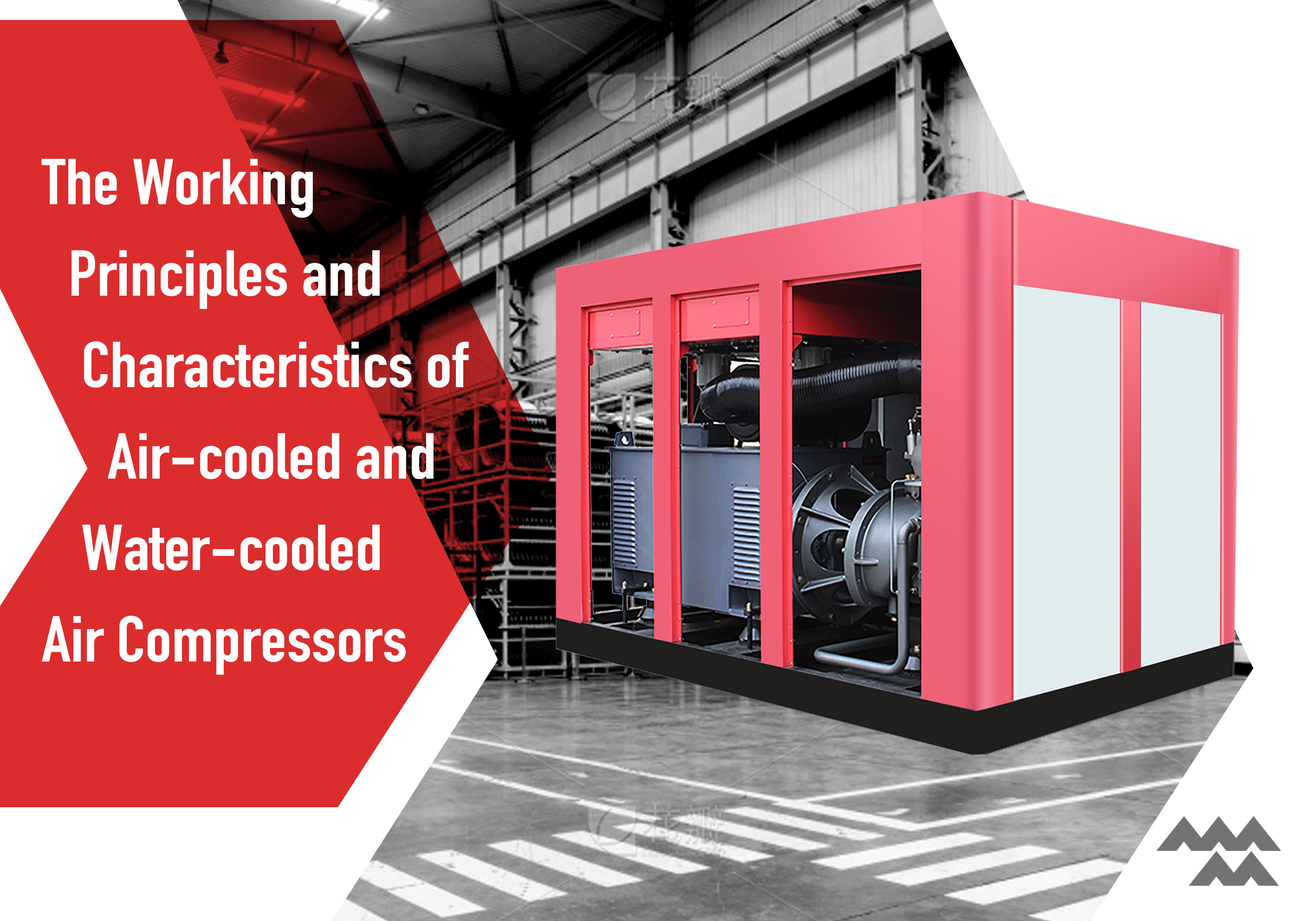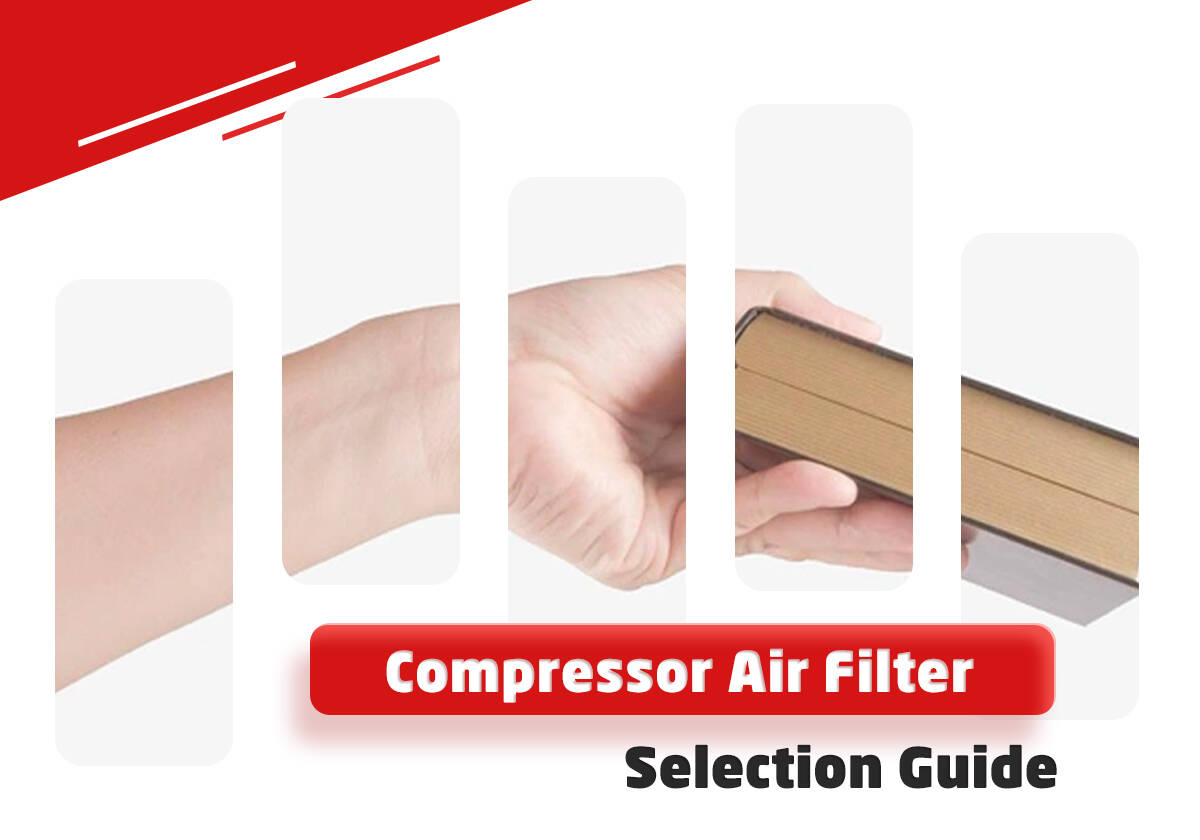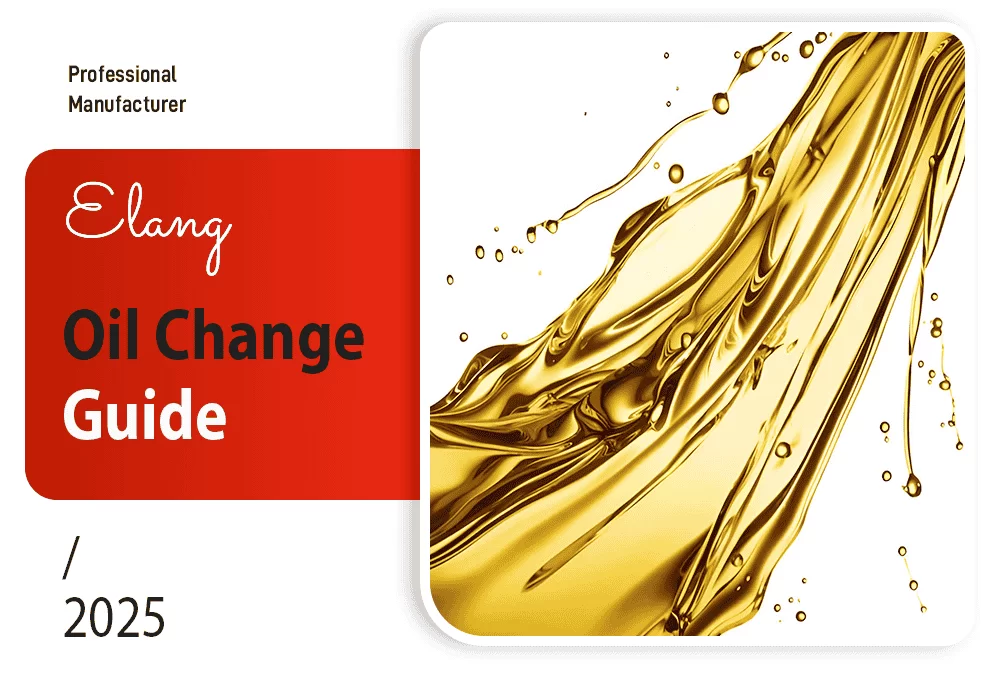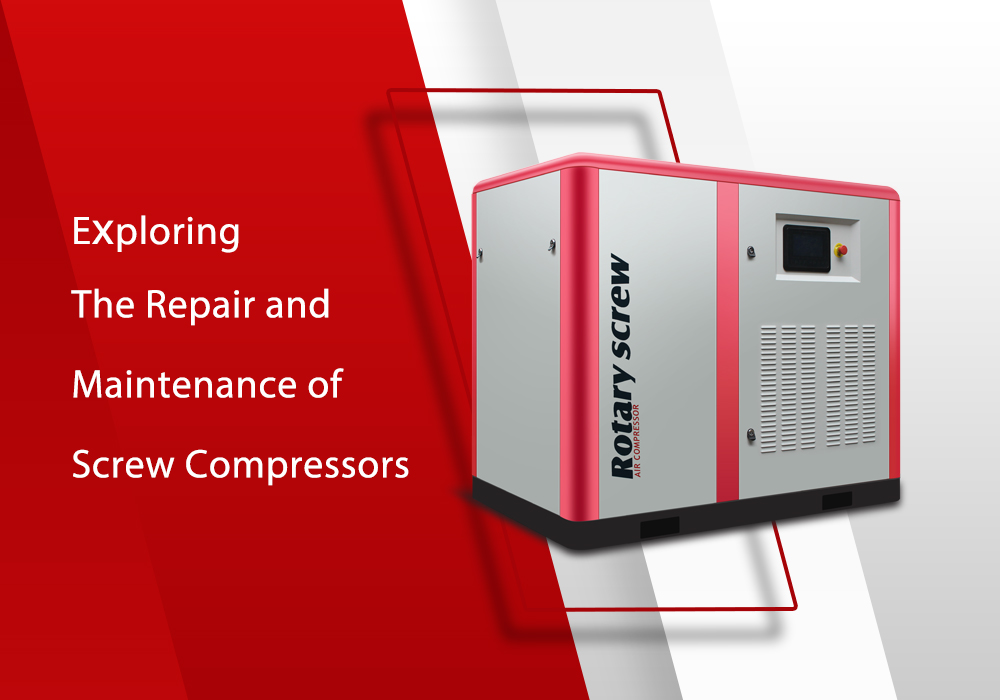
Screw air compressor is a common compressed air equipment in industry, the cooling method is one of the key factors to ensure its normal operation. There are two main cooling methods: air cooling and water cooling. These two methods have a series of characteristics and applications, which have a significant impact on the performance and efficiency of air compressors.
Let’s dive into these two cooling methods to better understand how they work and their advantages and disadvantages.
Working Principle
Air Cooling Screw Air Compressor
Air-cooling screw air compressor is a common air compressor, its working principle is to compress the air through the rotation of the screw, and then discharge the compressed air.
The main components of air-cooled screw air compressor include air end, motor, oil separator, control system, etc. Among them, air end is the core part of the air cooling screw air compressor, which is composed of two meshing screws, through the rotation of the screw to compress the air. The motor provides the power to the screw, allowing it to rotate. The cooler is used to reduce the temperature of the machine to ensure its normal operation. The oil separator is used to separate the oil and gas mixture generated during the compression process to ensure that the discharged air is dry. The control system is used to control the operation of the whole system to ensure its stability and safety.
The working process of air cooling screw air compressor can be divided into four stages. The first stage is inhalation, when the motor starts, the screw begins to rotate, and the air enters the compressor body through the suction valve. Next stage is compression, where the rotation of the screw compresses the air and generates heat. In order to ensure the stability of the system, the temperature of the air end needs to be controlled within a certain range. The third stage is cooling, where the compressed air is cooled through a cooler to lower its temperature. The last stage is exhaust, the cooled air is discharged through the oil separator and exhaust valve, becoming high pressure dry air.
Water Cooling Screw Air Compressor
In a water-cooled air compressor, heat is removed through a heat exchanger using circulating water. The heat exchanger consists of a series of tubes or plates designed to transfer heat from the compressed air to the circulating water. As the compressed air flows through the heat exchanger, it comes into contact with the walls of the tubes or plates that come into contact with the circulating water. The heat from the compressed air is transferred to the water, which then carries the heat away from the air compressor. The heat from the compressed air is transferred to the water, which then carries the heat away from the air compressor.
The working principle can be divided into the following key steps:
1. The air compressor draws in ambient air and compresses it to a high pressure.
2. As the air is compressed, its temperature increases.
3. The heat generated during the compression process is discharged through a heat exchanger using circulating water.
4. The compressed air flows through the heat exchanger, where it comes into contact with the walls of tubes or plates.
5. The heat from the compressed air is transferred to the circulating water, which carries the heat away from the air compressor.
6. The water returns to a cooling tower or another source, where it is cooled before returning to the heat exchanger.
7. After cooling, the compressed air is then transported to the application.
The Difference between Air Cooling and Water Cooling
1. Cooling Efficiency
Water cooling air compressors usually have higher cooling efficiency than air cooling air compressors. Water coolers can provide better heat transfer and heat dissipation, cooling hot compressed air to lower temperatures. In contrast, the air cooler relies on the convection heat dissipation of the surrounding air, and its cooling effect is relatively low.
2. Temperature Control
Water-cooled air compressors have better temperature control ability. Due to the higher cooling efficiency provided by water cooling, they can effectively control the operating temperature of the air compressor. This helps maintain stable working conditions and extends the equipment’s service life.
3. Noise Level
Water cooling air compressors are usually quieter than air cooling air compressors. Because the water cooler can reduce the operating temperature of the air compressor, reduce the possibility of noise generation, thereby improving the working environment.
4. Installation and Maintenance
Water cooling air compressors may be more complex in terms of installation and maintenance. A water cooling system requires the installation of additional equipment such as water pumps, water pipelines, cooling towers, and regular inspections and maintenance of the cooling water quality. In contrast, the installation and maintenance of air cooling air compressors is relatively simple and does not require additional water cooling systems.
5. Environmental Influence
Water-cooled air compressors have a lower environmental impact in terms of heat discharge compared to air-cooled air compressors. Air coolers release heat directly into the surrounding air, which can potentially lead to thermal pollution. In contrast, water coolers transfer heat to the water in the environment through devices like cooling towers, resulting in a less environmental impact.
Based on actual needs and application environment, choosing the appropriate cooling method is crucial to the performance and efficiency of the air compressor. Decisions need to be made taking into account factors such as operating temperature requirements, noise requirements, environmental impact, equipment cost and maintenance.









-66x66.png)



